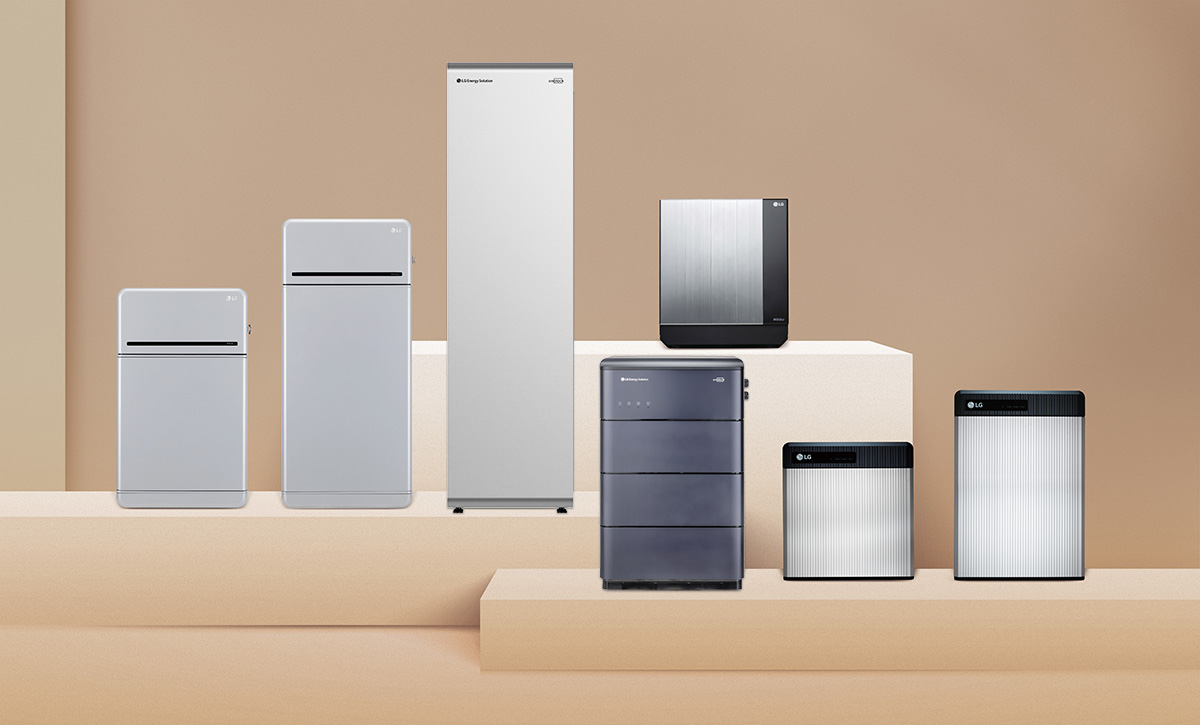Residential energy storage systems are becoming an increasingly popular solution in Europe for supplying households with sustainable electricity at a low cost and thus driving greater sustainability. The range of available solutions is growing rapidly, and technical developments are increasing as well. Interested customers can choose between lead-acid, lithium-nickel-manganese-cobalt-oxide or lithium-iron-phosphate batteries, among others. To provide customers with a better overview of available cell-technologies, LG Energy Solution explains different types of batteries and the advantages they offer:
Lead-based residential storage systems
Lead batteries have a long history. Many people are familiar with those as batteries in their vehicles, as they are particularly reliable and safe. They were frequently used in the past to store solar energy. Lead-acid batteries were even the first type of battery to be used for residential solar power storage in households. The batteries are cheap but have some disadvantages that have led to lead-acid batteries hardly being used as residential storage systems today. They have a limited lifespan, low energy density as well as slower charging and discharging efficiency compared to newer battery technologies. In addition, lead batteries can only be discharged halfway to prevent damage to the battery.
Lithium-ion technology
In recent years, there has been steady development in battery technology. Lithium-ion batteries are now the most common technology basis for residential storage systems. The term lithium-ion storage describes the structure of the electrolyte, which contains the metal lithium. This very light and small metal is particularly suitable for storing large amounts of energy and the efficient transport of electrons. There are different types of lithium-ion batteries that are used for residential storage systems. The two most common types are lithium-nickel-manganese-cobalt-oxide and lithium-iron-phosphate storage batteries:
- Lithium-Nickel-Manganese-Cobalt-Oxide (NMC)
Lithium-nickel-manganese-cobalt-oxide batteries are used in most residential storage systems. They offer many advantages that make them attractive for storing solar energy. They have a high energy density and can therefore store a large amount of energy in a small space. This means that residential storage systems such as the LG Energy Solution PRIME and enblock C can be installed in small spaces and still provide sufficient capacity for a high energy consumption. They also offer high power output and support high discharge currents. In electric cars, for example, NMC batteries are used almost exclusively, as high energy density and power output are essential.
However, interested customers should note that NMC batteries are slightly more expensive on average than LFP batteries. The raw materials cost higher and the production process is more complex. On the other hand, you benefit from smaller storage systems on average, which is particularly relevant for small basements. - Lithium-iron-phosphate (LFP)
Lithium-ion-phosphate batteries are are another interesting and popular storage technology. LG Energy Solution has just introduced its first LFP-based batterie, the LG Energy Solution enblock E residential storage systems. LFP home storage batteries are characterised by a slightly lower average price compared to NMC batteries. Because the raw materials are cheaper, you can save some money. However, the energy density is lower and the required volume increases. In terms of safety, LFP-cells are not inherently better than NMC-cells, even though this is often publicly communicated. However, LFP cell chemistry is easier to manage. Conversely, this only means that the battery management system of an NMC storage system must be able to react to more variances in the battery cell.
One of the disadvantages of LFP batteries in Europe is the relatively low SOC accuracy in winter. This results in the decrease of operating efficiency in system level. On the other hand, the price is slightly lower.
The choice of suitable battery technology depends on various factors. One can’t claim that LFP- or NMC-cells are better than the other, which is why LG Energy Solution offers residential storage solutions with both cell-types. However, important factors include the required storage capacity, the desired service life and, of course, the costs. In addition, the home storage system must also be compatible with the desired inverter. Fortunately, LG Energy Solution storage systems are compatible with systems from leading manufacturers such as Fronius, SMA, Sungrow, GoodWe, Kostal and others. When choosing a residential storage system, it is therefore always helpful to consult an installer who will put together a system that is tailored precisely to your requirements. You can find an installer for LG Energy Solution residential storage systems in your area here.


